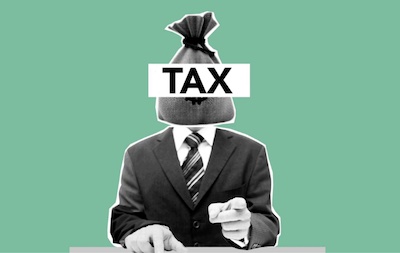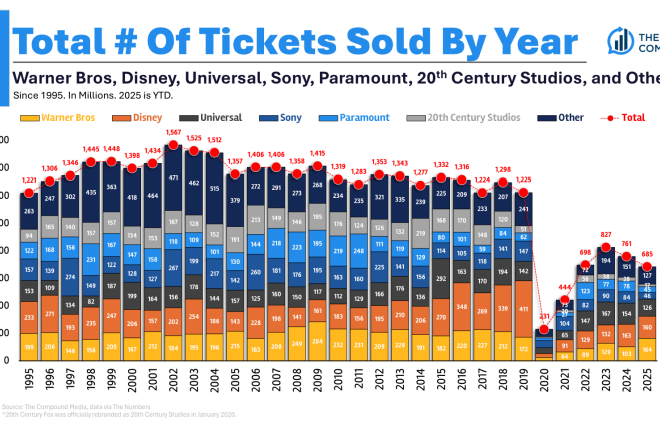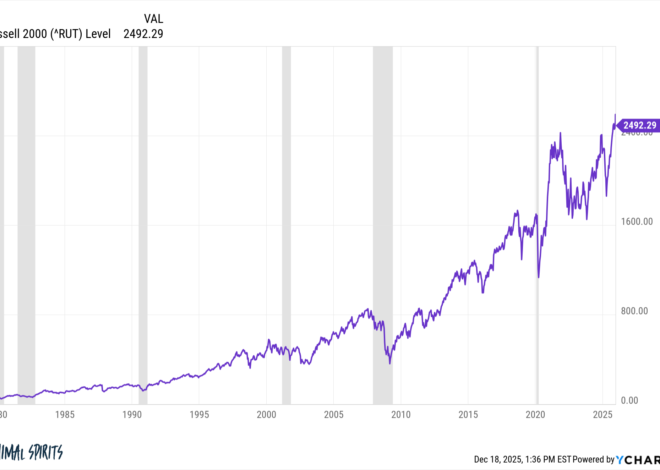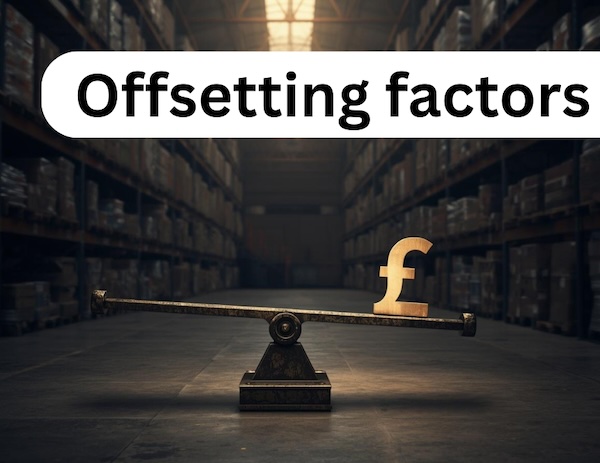Hey, do you know your tax brackets? I’m talking about the critical bands that determine whether you’re a basic (20%), higher (40%), or additional-rate (45%) taxpayer.
Everyone knows their height and their shoe size. Most teenage boys even spend a furtive moment with a ruler.
But many of us have no idea where the various tax brackets start and end – nor where our income falls within these bands.
True, the freezing of personal tax allowances and income tax thresholds in recent years has made people more aware.
Yet too many people still don’t know how much of their own salary they get to keep, or even how to figure it out.
Let’s begin with some hard numbers. We’ll then get into what your tax bracket means for your take home pay.
2025/2026 UK tax brackets
The rate of tax you pay depends on your total income from all sources. This includes salary, interest, dividends, pensions, property letting, and so on.
You add up all this income to get your total income figure.
You then subtract your personal allowance from the total to see which tax bracket you fit into. More on that in a moment.
For England, Wales, and Northern Ireland, the income bands after allowances are currently:
| Income Tax Rate | 2024/2025 | 2025/2026 |
| Starting rate for savings: 0% | £0-£5,000 | £0- £5,000 |
| Basic rate: 20% | £0- £37,700 | £0- £37,700 |
| Higher rate: 40% | £37,701-£125,140 | £37,701-£125,140 |
| Additional 45% rate | £125,141 and above | £125,141 and above |
Source: HMRC
Note: If your non-savings taxable income is above the starting rate limit, then the starting savings rate does not apply to your savings income.
Scotland has its own (similar) tax rates. Refer to the Scottish Government for the gory details.
If you prefer to think in terms of tax bands – that is, before deducting the personal allowance – then for England, Wales, and Northern Ireland these are:
- Personal allowance at 0%: £12,570
- Basic rate 20% – £12,571 to £50,270
- Higher rate 40% – £50,271 to £125,140
- Additional rate 45% – £125,141 to the moon
Again, the higher rate threshold has been frozen until 2028.
Complicating factor alert! If you earn over £100,000 you’ll pay a marginal rate of 60% on some of your income. What joy! More below.
2025/2026 personal allowance
The tax year runs from 6 April to 5 April the next year.
All of us have a basic level of income – whether we’re employed or self-employed – that we can earn during this period before we have to pay income tax.
But once your allowance is used up, the government starts to take its cut via income tax.
Everyone starts with the same personal allowance:
- For 2025/26, this personal allowance is £12,570
Your personal allowance may be bigger if you qualify for Married Couple’s Allowance or Blind Person’s Allowance. It’s reduced if your income is over £100,000. We’ll get to that in a minute.
Note the £12,570 personal allowance is still the same as it was in 2021/22, and it’s frozen until 2028. This was purportedly to raise revenue to pay for extra State spending during the pandemic.
Freezing the allowance means that as your salary rises over the years, proportionally less of it is covered by the tax-free band. You’ll therefore lose a greater share of your income to tax.
Another consequence of freezing the personal allowance is it will soon be insufficient to fully cover the state pension.
The state pension is currently £11,973 a year – just squeaking under the £12,570 personal allowance. But if the pension continues to rise as expected over the next two years then an estimated 12 million people will pay some income tax on their state pension from 2027.
Blind Person’s and Married Couple’s allowance
There are two other personal allowances you might qualify for:
These are added to the standard personal allowance, if you qualify. They can give you or your spouse a slightly higher personal allowance.
- MoneySavingExpert has a good guide to the Married Couple’s Allowance.
The 60% tax trap for those earning £100,000 or more
If you’re on a six-figure salary then I’ve got some unpleasant numbers for you.
Anyone with an income of over £100,000 sees their personal allowance reduced by £1 for every £2 of income above the £100,000 threshold.
This effectively pushes up the marginal rate of tax you pay on income between £100,000 and £125,140 to 60%.
On earnings above £125,140, the 45% additional tax rate applies.
Ironically, you’re taxed at a lower rate on your income above the £125,140 than on what you earn between £100,000 and £125,140. That’s because your personal allowance has been totally whittled away by this point.
The effective 60% marginal rate you’ll pay on the £25,140 chunk of income between £100,000 and £125,140 is far higher than official tax rates indicate.
If your income falls within the tax trap band, there’s a strong case for increasing your pension contributions by enough to reduce your taxable income to below £100,000. Rather than paying 60% tax on your income above £100,000 to HMRC, you’ll instead get generous tax relief on your extra pension savings.
Remember: you can put up to £60,000 into a pension every tax year.
The child benefit booby-trap
Got kids? There’s a similar effective hike in the marginal tax rate when either parent earns over £60,000 a year.
Child benefit is available to parents of children under 20. But this benefit is progressively withdrawn above the £60,000 threshold, via a fiddly High Income Child Benefit Charge that sees you repay 1% of your child benefit for every £200 you earn above the threshold.
For example, if you earn £70,000 – that is, £10,000 above the income threshold – then you would need to repay 50% of the full child benefit amount. (Because £10,000/£200 = 50).
At £80,000 you’ll pay it all back. (£20,000/£200 = 100).
Depending on how many kids you have – and hence how much child benefit you’ll be repaying – this could equate to an effective tax rate of as much as 57% on earnings between £60,000 to £80,000.
Again, you might want to see if you can increase your pension contributions to keep your child benefit whilst improving your long-term financial future.
How tax brackets work to determine the tax you pay
Let’s run through a couple of examples to show how this all works.
Basic-rate tax payer
Let’s say you will earn £45,000 in 2025/26 from all sources. Your taxable income is £45,000 minus your personal allowance of £12,571.
So £32,429.
This means all your income is in the 20% tax bracket, as it’s less than £37,701 in the first table above.
In practice you’ll pay no tax on the first £12,571 you earn, and 20% on the remaining £32,429.
You’ll therefore pay £6,486 in tax on your income.
Higher-rate payer
Now let’s imagine your total income adds up to £60,000.
By the same method (£60,000 minus £12,571) your taxable income is £47,429.
The first £37,701 of this will be taxed at 20%.
The rest – £9,728 – is taxed at 40%.
You’ll pay:
- Basic rate tax of £7,540
- Higher rate tax of £3,891
- Total tax paid is £11,431
In nearly all cases you’ll also pay additional and hefty National Insurance contributions.
National Insurance
National Insurance works separately from income tax. But in practice it’s just an extra tax you pay on your earnings.
National Insurance comes with its own fiddly rules – and in recent years the Government has been prone to messing with them.
That’s because people find it even harder to keep track of what they’re paying in National Insurance than with income tax. National Insurance rates are therefore less politically contentious than income tax rates.
The big news recently was a hike in employer National Insurance contributions (NICs) in the October 2024 Budget. From April 2025, the government reduced the threshold at which employer NICs become payable from £9,100 to £5,000 per annum and it raised the main rate of employer NIC contributions from 13.8% to 15%. To slightly ease the resultant pain on employers, it also made certain allowances that companies can claim a bit more generous.
The net result is a higher ‘tax on jobs’, as the tabloids put it. The Treasury estimated at the time the changes would raise an additional £24bn in revenues in the 2025 to 2026 tax year.
You don’t directly pay employer’s NICs. The company you work for does. But I’d say the chances of employers absorbing all the cost of these hikes without a hit to wages or job creation are remote.
At least the rates of NICs we pay directly were not changed in 2024, thanks to pre-election pledges concerning taxes on working people.
This arrested a pattern of messing around with NIC rates that has seen the goal posts move multiple times over the past few years.
Sidebar: a brief history of recent NIC changes
The main National Insurance rate for employees was cut from 12% to 10% on 6 January 2024.
The rate was cut again to 8% in April 2024.
Yet it was only in 2022 that National Insurance rates had been hiked by 1.25%. Ostensibly this was to pay for the NHS and social care.
No wonder so few people have any idea where NIC rates stand today.
One recent-ish change was sensible, however. From 6 July 2022 the personal allowance became the threshold for starting National Insurance payments. This means everything you earn within the personal allowance is now 100% yours to keep – with no tax or National Insurance to pay.
It was a welcome piece of simplification in a sea of complexity.
Indeed, anything else we write here about National Insurance will not be exhaustive enough to stop someone saying “what about X?” in the comments.
Don’t blame us! Blame the labyrinthine UK tax system.
National Insurance rates
Just briefly then, most employees currently pay what are called ‘Class 1’ contributions at the following rates:
| Your salary | 6 April 2025 to 5 January 2026 |
|---|---|
| £242 to £967 a week (£1,048 to £4,189 a month) | 8% |
| Over £967 a week (£4,189 a month) | 2% |
Source: HMRC
As discussed, your employer also pays National Insurance contributions, based on your salary. This gives rise to the technique known as salary sacrifice.
With salary sacrifice you give up pay in return for some other benefit – usually extra pension contributions. You get the benefit, and you and your employer also pay less National Insurance.
Self-employed people make different contributions, depending on profits. These are typically worked out via a self-assessment tax return.
In a sensible world National Insurance would be merged with income tax. This doesn’t happen because (a) supposedly the money raised is set aside for state pensions and other welfare funding (it’s not) and (b) no UK government wants to been seen setting an income tax rate that’s explicitly above 50%.
Your tax bracket determines your take home pay
Like many students, I was philosophically a left-wing tax-and-spender.
It was a pretty low-stress position to hold when I paid no taxes…
…but then I got a job.
Suddenly I saw how much money would be taken out of the meagre pay I received for ramming my head repeatedly into the coalface for 40 hours a week. Economically speaking, I turned more to the right.
As my dad used to say, quoting someone else:
If you’re not a socialist at 20 you haven’t got a heart.
If you’re not a capitalist at 30 you haven’t got a head.
I’d add: if you don’t know your tax bracket by now then you haven’t got a clue.
Most of us care about what we get to keep, after tax. We’re not so preoccupied with how our taxes help to fund the NHS or to pay interest on the UK’s national debt – vital though all that may be.
So when we start working – and we start paying taxes – we’re shocked by how little of our pay actually makes it into our bank accounts.
Beyond the sticker shock
Knowing your tax bracket is about more than just stopping you from fainting when you see your take home pay, though.
Armed with your knowledge of tax brackets, you can be more strategic about adding money to ISAs and pensions.
As we’ve seen above, the tax system gets progressively more punishing as your salary passes through various thresholds. You might therefore prefer to put more of your more higher-taxed earnings into a pension, for example.
Thanks to pension tax relief, you’ll sacrifice less of a share of your post-tax disposable income, while you’re also building up a bigger retirement pot.
A fiscal drag
The tax take from British workers has been rising for more than a decade.
This was partly achieved by ‘fiscal drag’.
Fiscal drag sees rising salaries pulling more workers into the higher-rate tax bands, because the tax band thresholds and allowances are frozen or only raised by a bit – despite high inflation.
After the financial crisis of 2008/2009, the threshold for higher-rate tax was actually explicitly lowered, despite inflation running above target. That move dragged millions more people into the higher-rate tax bracket.
National Insurance rates also rose for higher-rate tax payers. And the wheeze that cut the personal allowance on incomes above £100,000 was introduced at this time, too.
True, the additional rate of income tax was reduced from a short-lived 50% to 45% in 2013. And eventually both the personal allowance and the higher-rate tax thresholds were lifted.
But as we’ve seen above, they were later frozen until 2028. (And maybe they won’t be lifted even then).
In short, if you remember the arcade game Frogger, that’s a good analogy for the ever-changing UK’s income tax landscape.
Bring me higher (tax) love
Some may quibble with my simplified narrative. But it’s directionally correct.
See this graph from the IFS, and pay particular attention to the yellow line:
Source: IFS
You can see that the numbers paying higher rates of tax (yellow line) has hugely increased since 2009 – let alone 1990.
Perhaps that’s fine. You might even argue the rise in higher-rate taxpayers is a reflection of rising income inequality as much as frozen tax bands.
We can debate that another day. I’m just pointing out how things have been going – and what might happen next.
We just lived through a period of historically high inflation. After peaking in double-digits, inflation is still above-target at 3.5%. Yet both the personal allowance and the thresholds for higher-rate taxes remain frozen.
Unless the government changes course, millions more workers will be dragged into paying higher and additional-rate taxes over the next few years.
A higher calling
If you’re a higher earner wondering why you’re not feeling as wealthy as you think you should, higher taxes will have something to do with it.
Okay, and higher mortgage rates and energy and food bills since 2022.
(Not to mention hedonic adaption! But let’s stay on-topic.)
The truth is being a higher-rate tax payer no longer means your wealthy.
Yes, I’m aware that the median annual earnings in the UK for full-time employees is still less than £38,000 – well below the higher-rate bracket. Nobody needs to get on a soap box to shout at me.
But the fact stands. Paying higher-rate tax hardly makes you Bertie Wooster these days.
Resistance is tax-efficient
I’m all for taxing, spending, and the UK offering a decent welfare safety net.
But I’m not going to leave a tip.
I’m a law-abiding citizen. However there are sensible and legal steps you can take to mitigate your total tax bill.
Use your ISA allowance and/or a pension to shelter your savings as much as as possible. Take steps to manage capital gains tax. You could also consider VCTs and EIS schemes if you’re up for the research, extra costs, and greater risks.
Higher-rate taxpayers should consider making maximal contributions into their pension. Most people are allowed to pay up to £60,000 into a pension in a year without any tax penalties, so there’s lots of headroom.
If you can cut your spending by enough to allow for very big pension contributions, then you might be able to get the higher-rate tax you’d otherwise pay entirely wiped out by tax relief. Depending on how much you earn, of course.
Such pension contributions accelerate the growth of your retirement pot. Just remember you’ll almost certainly have to pay some tax when you drawdown a pension income later.
Changes over the past decade have made pensions much more attractive. Even I, a former pension-phobe, would prefer to lock away some of my money for many years in a pension than to chuck it away by paying a 40% or 45% tax rate today – let alone an effective marginal rate of 60%.
The bottom line? Taxes are continuing to rise. Take cover, or take the pain.
Note: This article was updated in June 2025 with the latest figures for UK tax brackets, personal allowances, NICs, median pay, and more. Comments below may refer to old numbers. Please check the dates if unsure.








